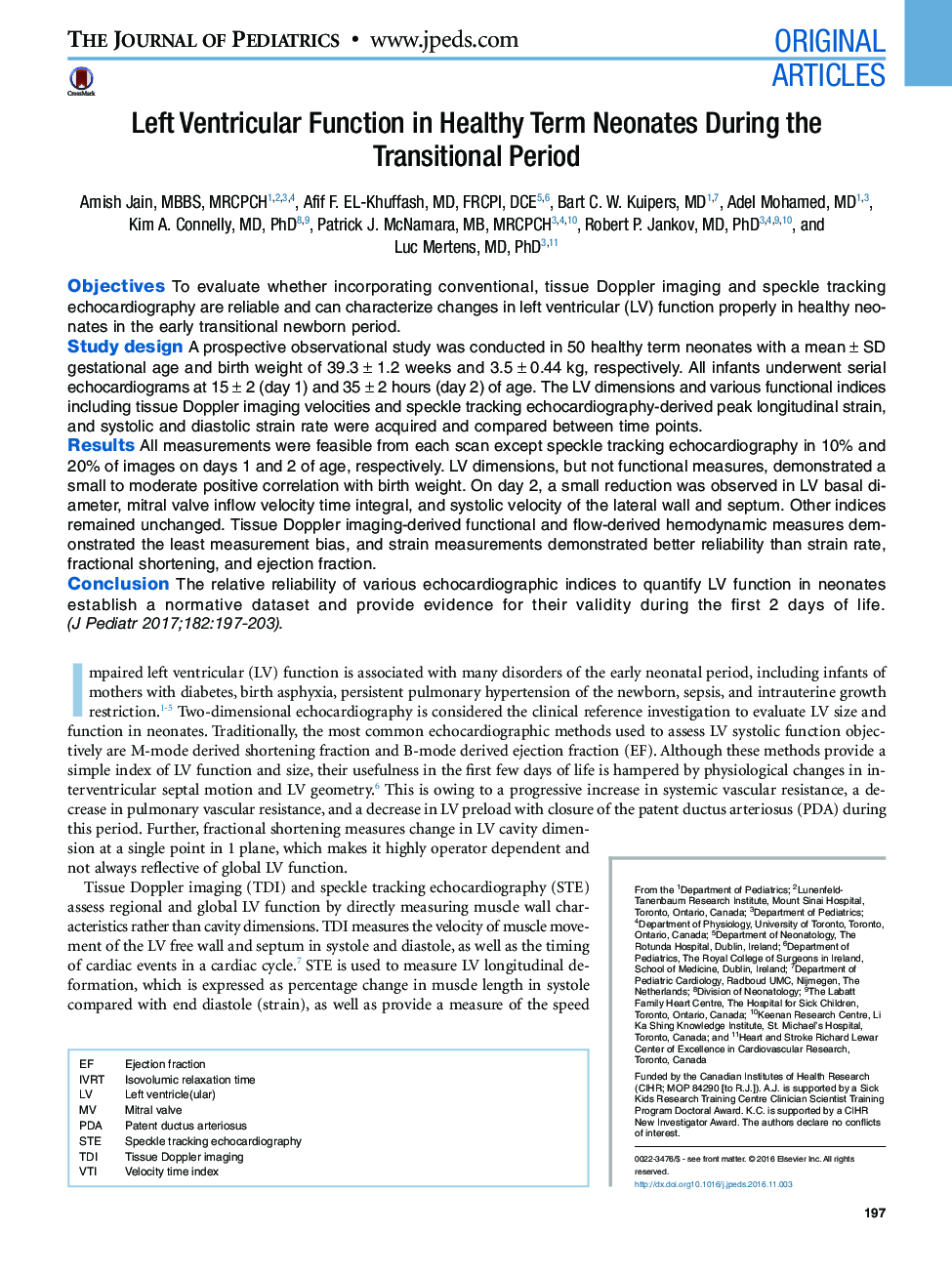| کد مقاله | کد نشریه | سال انتشار | مقاله انگلیسی | نسخه تمام متن |
|---|---|---|---|---|
| 5719675 | 1607417 | 2017 | 9 صفحه PDF | دانلود رایگان |
ObjectivesTo evaluate whether incorporating conventional, tissue Doppler imaging and speckle tracking echocardiography are reliable and can characterize changes in left ventricular (LV) function properly in healthy neonates in the early transitional newborn period.Study designA prospective observational study was conducted in 50 healthy term neonates with a meanâ±âSD gestational age and birth weight of 39.3â±â1.2 weeks and 3.5â±â0.44âkg, respectively. All infants underwent serial echocardiograms at 15â±â2 (day 1) and 35â±â2 hours (day 2) of age. The LV dimensions and various functional indices including tissue Doppler imaging velocities and speckle tracking echocardiography-derived peak longitudinal strain, and systolic and diastolic strain rate were acquired and compared between time points.ResultsAll measurements were feasible from each scan except speckle tracking echocardiography in 10% and 20% of images on days 1 and 2 of age, respectively. LV dimensions, but not functional measures, demonstrated a small to moderate positive correlation with birth weight. On day 2, a small reduction was observed in LV basal diameter, mitral valve inflow velocity time integral, and systolic velocity of the lateral wall and septum. Other indices remained unchanged. Tissue Doppler imaging-derived functional and flow-derived hemodynamic measures demonstrated the least measurement bias, and strain measurements demonstrated better reliability than strain rate, fractional shortening, and ejection fraction.ConclusionThe relative reliability of various echocardiographic indices to quantify LV function in neonates establish a normative dataset and provide evidence for their validity during the first 2 days of life.
Journal: The Journal of Pediatrics - Volume 182, March 2017, Pages 197-203.e2
